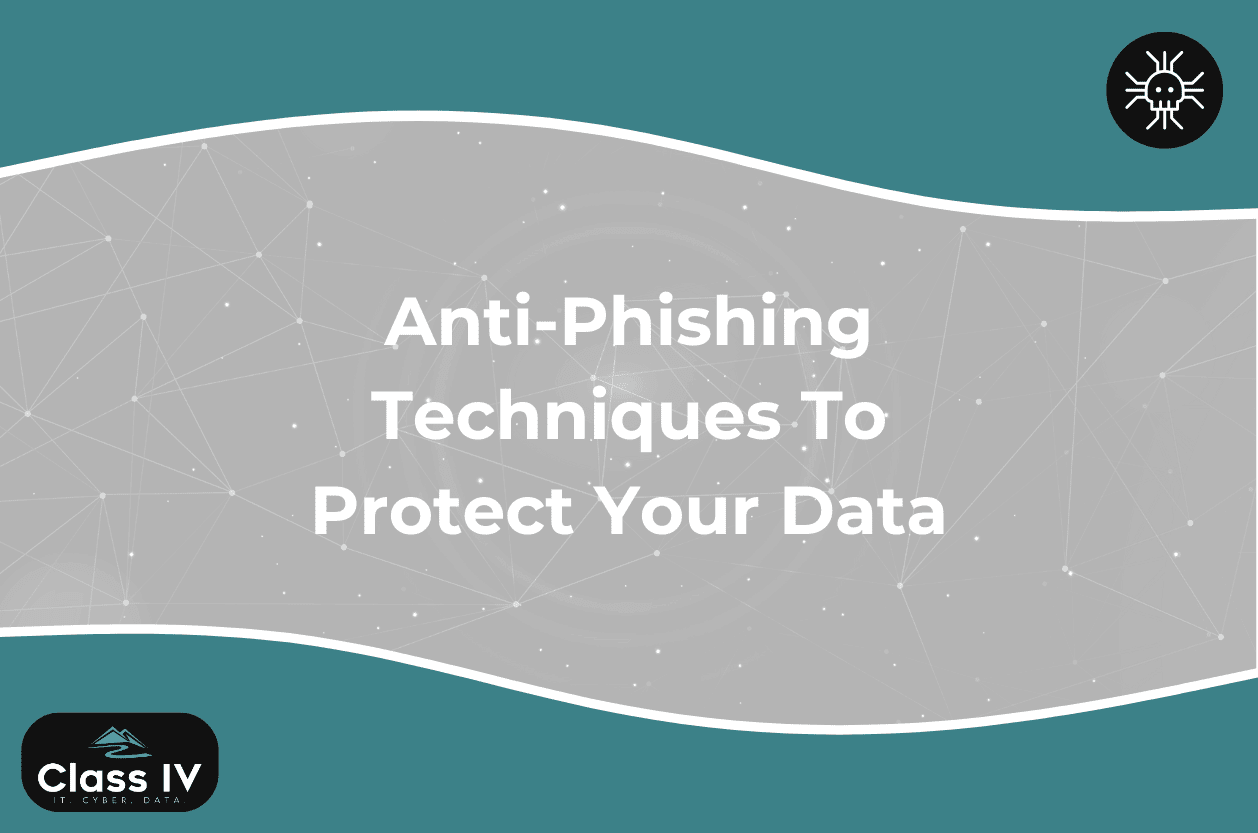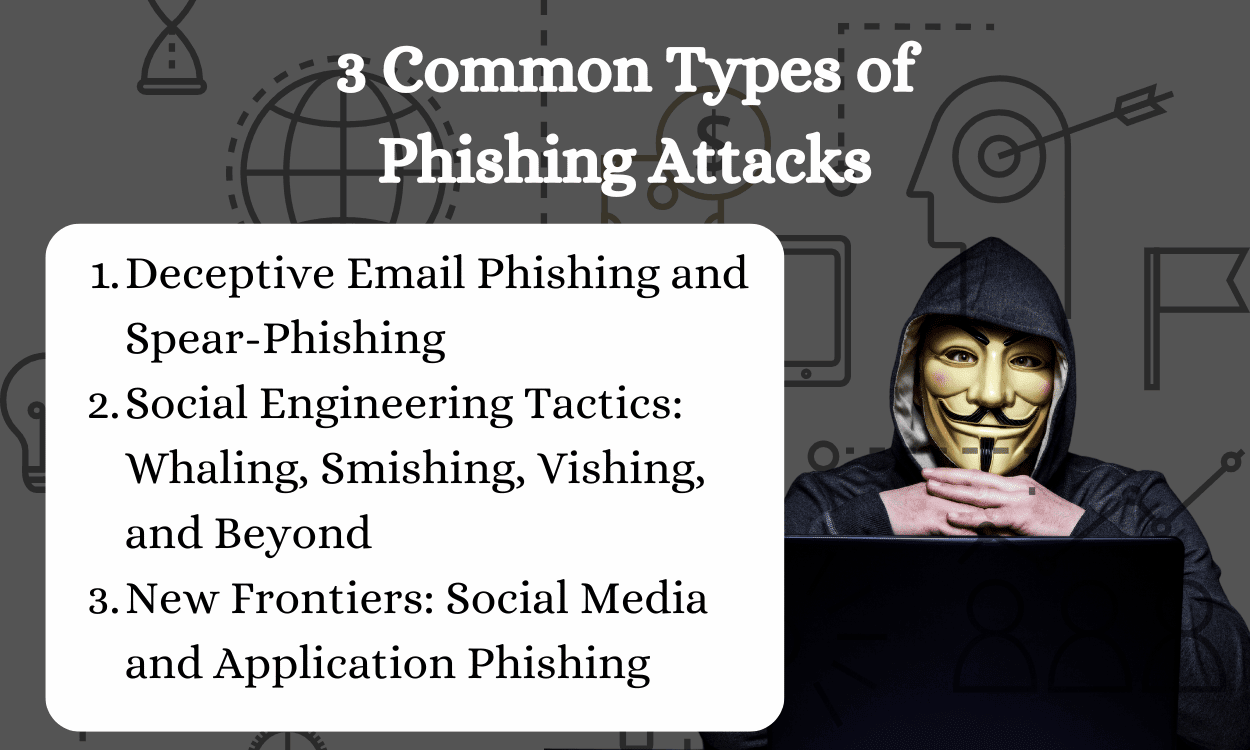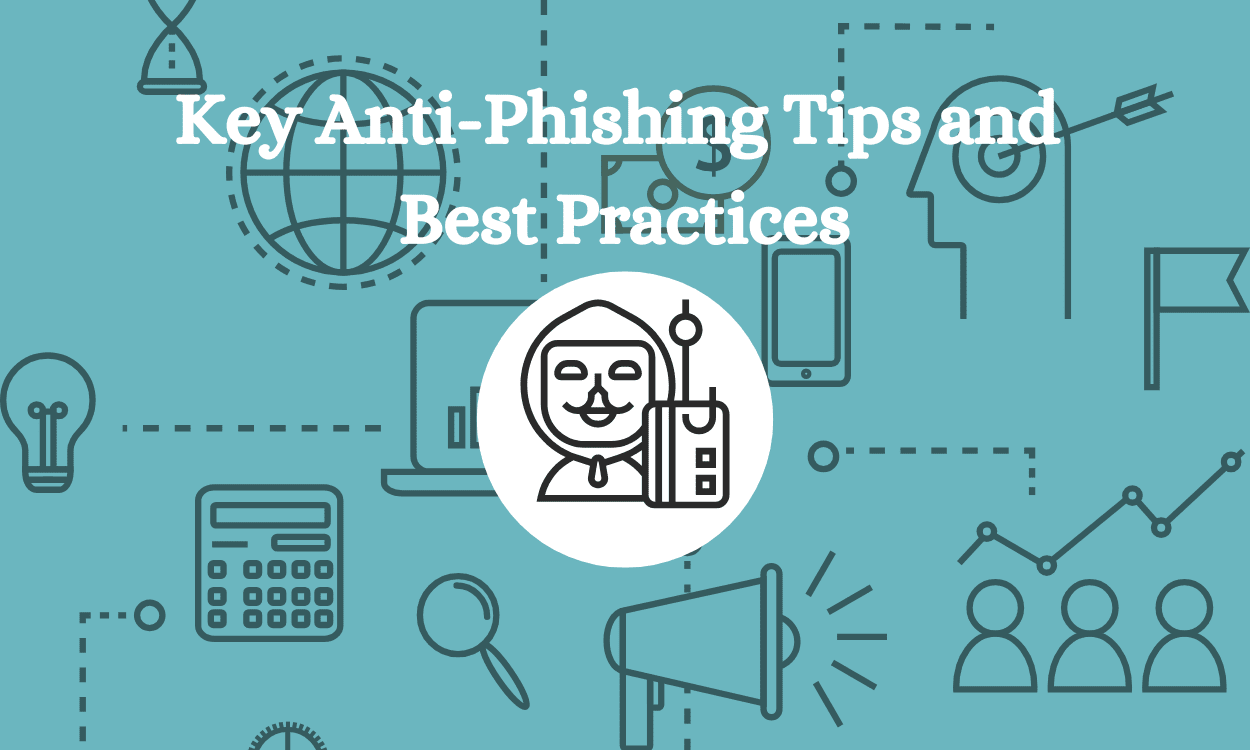
- Home
- Cybersecurity Tips
- Anti-Phishing Techniques To Protect Your Data
Over time, phishing attacks have evolved from simple, easily detectable scams to highly sophisticated operations that often fool even the most vigilant users. Early phishing attempts frequently relied on poorly crafted emails with glaring grammatical errors and suspicious sender addresses. However, modern-day phishing attacks leverage advanced social engineering tactics, compelling email templates, and legitimate-looking websites to deceive their victims.
In the first quarter of 2024 alone, the Anti-Phishing Working Group (APWG) observed a staggering 963,994 phishing attacks, representing the lowest quarterly total since the final quarter of 2021. This concerning statistic highlights the ever-present threat phishing attacks pose to individuals and organizations alike.
As phishing attacks become increasingly sophisticated, staying one step ahead is crucial for protecting your organization. Don’t leave your cybersecurity to chance. Contact Class IV today for expert consulting services tailored to safeguard your business against these evolving threats. Let us help you build a robust security strategy that keeps your data and your team safe!

3 Common Types of Phishing Attacks and How They Work
Let’s explore phishing attacks and learn about their common types and sneaky tactics.
-
Deceptive Email Phishing and Spear-Phishing
The classic phishing attack often starts with a deceptive email. Imagine this: You receive an email that appears to be from a trusted source, like your bank or a well-known online retailer. The email might urge you to update your account information, verify a recent transaction, or claim there’s been suspicious activity.
But here’s the catch – the email is a carefully crafted fake. Clicking on the provided link could lead you to a counterfeit website designed to steal your login credentials and other sensitive information.
Now, let’s talk about spear-phishing, a more targeted form of phishing. In these attacks, cybercriminals tailor their emails to specific individuals or organizations, making them even more convincing. They might gather information from social media profiles, company websites, or previous data breaches to make their messages seem highly personalized.
-
Social Engineering Tactics: Whaling, Smishing, Vishing, and Beyond
Phishing goes beyond email. Let me introduce you to some other forms of social engineering tactics employed in phishing attacks:
- Whaling: This technique targets high-profile individuals like CEOs or government officials. Attackers use personalized emails or messages to trick these individuals into revealing confidential information or transferring funds.
- Smishing: Have you ever received a suspicious text message claiming to be from your bank or a delivery service asking you to click on a link? That’s smishing—phishing attempts disguised as SMS messages.
- Vishing involves using phone calls to trick people into giving up sensitive information. For example, a scammer might pose as a bank representative and request account details to verify a transaction.
-
New Frontiers: Social Media and Application Phishing
As technology evolves, so do the methods of attackers. Social media and applications have become new hunting grounds for phishing attacks. Here’s how they work:
- Social Media Phishing: Cybercriminals create fake profiles or hack into existing ones to send phishing messages or spread malicious links through posts and direct messages. Since social media platforms were the most frequently attacked sector, targeted by 37.4% of all phishing attacks in Q1 2024, it’s more important than ever to be cautious about the links you click and the information you share on these platforms.
- Application Phishing: In this technique, attackers create fake mobile applications that mimic legitimate ones. They trick users into downloading these malicious apps, which can then steal login credentials, financial information, or other sensitive data.
While the financial sector, including banks and online payment services, remains a target, the first quarter of 2024 saw a shift in phishing trends. Phishing against the Financial Institution (banking) segment continued to fall, down to 9.8 percent in Q1 2024. Attacks against online payment services were another 7.4 percent of all attacks in Q1 2024. This data suggests that while financial institutions remain vigilant, other sectors, particularly social media, have become increasingly vulnerable to phishing attacks.

Key Anti-Phishing Tips and Best Practices for Individuals and Organizations
The threat of phishing attacks is more prevalent than ever. Astonishingly, 57% of organizations face phishing scams weekly or daily, highlighting the urgent need for robust phishing prevention measures. This alarming statistic underscores the importance of understanding phishing prevention tips and implementing effective anti-phishing protection.
Detecting Phish: Analyzing URLs, Domain Names, and Other Verification Techniques
One of the first lines of defense against phishing attacks involves being able to identify suspicious emails and websites. Attackers often use deceptive tactics, such as mimicking legitimate brands or creating urgent situations, to trick individuals into clicking on malicious links. That’s where a keen eye for detail becomes invaluable.
When you receive an email that seems even slightly off, take a moment to scrutinize the sender’s email address. Look for any misspellings, unusual characters, or inconsistencies with the supposed sender’s domain name. This simple step can often be the first clue that something isn’t right.
Furthermore, pay close attention to the URLs embedded in emails or found on websites. Hover your mouse over links before clicking to reveal the actual destination address. This practice helps ensure that the link leads to the intended website and hasn’t been manipulated to direct you to a phishing page.
Additionally, enabling two-factor authentication (2FA) provides an extra layer of security, making it significantly harder for attackers to gain unauthorized access to your accounts, even if they manage to obtain your password.
Educational Programs on Recognizing Phishing Attempts
While technical safeguards play a crucial role in phishing defense, human error remains a significant factor in many successful attacks. IBM reports that phishing initiates 41% of cyber incidents, a stark reminder that education and awareness are paramount in the fight against phishing.
Organizations and individuals alike need to prioritize ongoing cybersecurity awareness training programs. These programs should cover various aspects of phishing, from recognizing common red flags in phishing emails to understanding the latest social engineering techniques.
Moreover, interactive training sessions that simulate real-world phishing scenarios can be particularly effective. By experiencing firsthand the tactics employed by attackers, individuals become better equipped to identify and avoid falling victim to these scams.
The Role of Technology: MFA, DMARC, and Encryption
Beyond individual awareness, technological solutions form a crucial part of any comprehensive phishing defense strategy. Multi-factor authentication (MFA), for instance, adds a robust layer of security, requiring users to provide multiple forms of verification before accessing an account. Even if attackers obtain a user’s password, MFA acts as a significant deterrent, preventing unauthorized access.
DMARC (Domain-based Message Authentication, Reporting, and Conformance) is another powerful tool that helps organizations protect their domain from being used in phishing attacks. By implementing DMARC, organizations can specify how email providers should handle emails that fail authentication checks, preventing spoofed emails from reaching their intended recipients.
Finally, encryption plays a crucial role in protecting sensitive information. By encrypting data both in transit and at rest, organizations can safeguard against unauthorized access to confidential data, even if a phishing attack successfully breaches other security layers.
Conclusion
In conclusion, as phishing attacks continue to evolve and pose significant risks to individuals and organizations, it is essential to stay informed and proactive in your approach to cybersecurity. By understanding the various tactics employed by cybercriminals—from deceptive emails to social media phishing—you can better protect yourself and your sensitive information. Implementing key anti-phishing strategies, such as educating employees, utilizing multi-factor authentication, and regularly updating security protocols, can dramatically reduce your vulnerability to these attacks.
Don’t leave your cybersecurity to chance; partner with experts who understand the intricacies of these threats. Contact Class IV today for tailored consulting services that will help you fortify your defenses against evolving cyber risks. Together, we can build a robust security strategy to protect your organization and keep your information safe!


